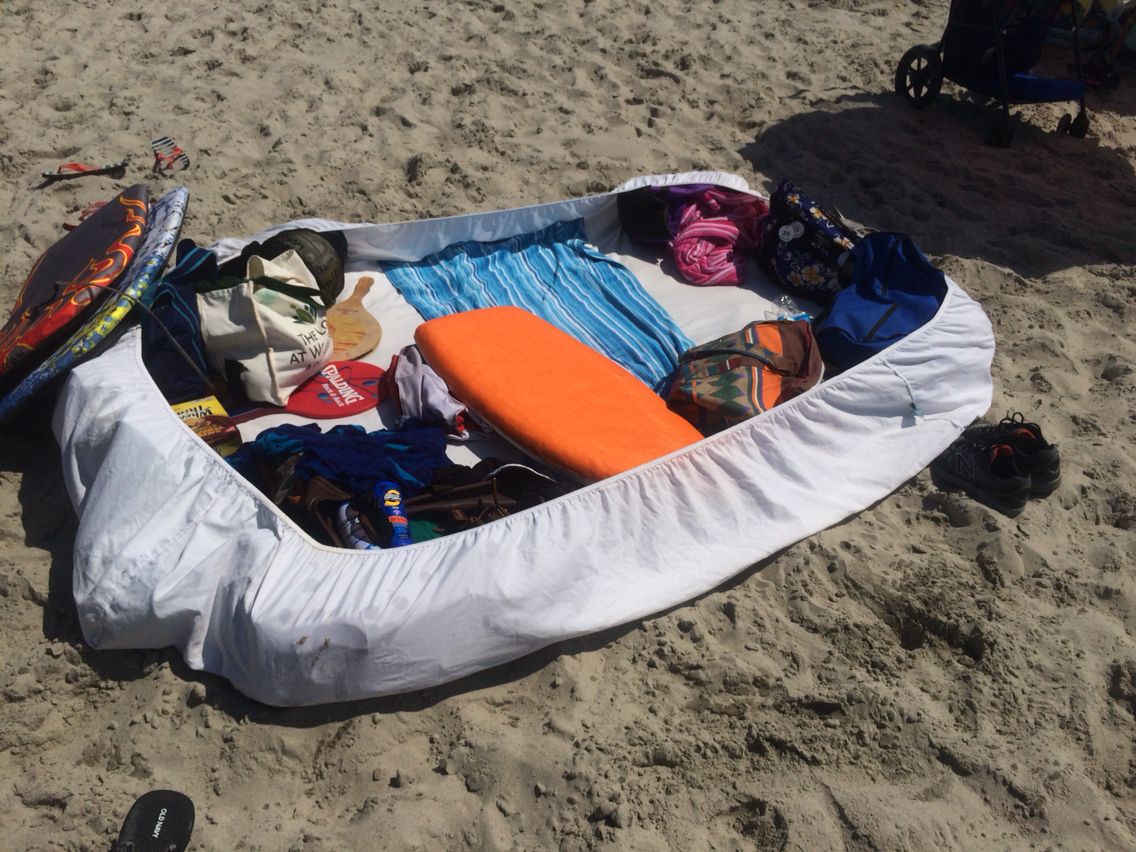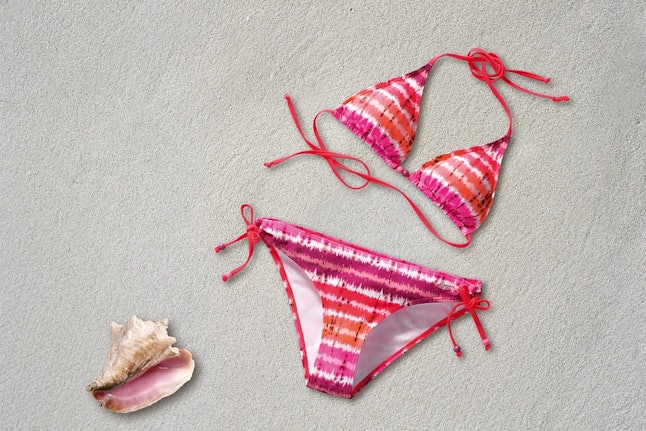Content Menu
● Understanding the Sand Problem
● Choosing the Right Swimwear
● Pre-Beach Preparation
● At the Beach Techniques
● Water Activities and Sand Prevention
● Post-Beach Care
● Long-Term Sand Management
● Embracing the Beach Experience
● Conclusion
A day at the beach is a perfect way to relax, soak up the sun, and enjoy the refreshing ocean waves. However, one common annoyance that can quickly dampen your beach experience is the persistent problem of sand getting into your swimsuit. Not only is this uncomfortable, but it can also lead to irritation and chafing. Fortunately, there are several effective strategies you can employ to keep sand at bay and ensure your beach day remains enjoyable from start to finish. In this comprehensive guide, we'll explore various techniques, tips, and tricks to help you prevent sand from infiltrating your swimsuit, allowing you to focus on the fun and relaxation that a beach day should bring.
Understanding the Sand Problem
Before diving into the solutions, it's essential to understand why sand tends to get into swimsuits so easily. Beach sand is composed of tiny particles that can easily cling to fabric, especially when wet. The texture and weave of swimsuit material, combined with the moisture from water and sweat, create the perfect conditions for sand to adhere to and become trapped within the fabric fibers. Additionally, movement and friction while walking, sitting, or lying on the beach can cause sand to work its way into the nooks and crannies of your swimwear.

Choosing the Right Swimwear
One of the most effective ways to prevent sand from getting into your swimsuit is to start with the right choice of swimwear. When shopping for beach-friendly swimsuits, consider the following factors:
1. Fabric Type: Opt for swimsuits made from tightly woven, smooth fabrics. Materials like nylon and spandex blends tend to repel sand better than looser weaves or textured fabrics. These smooth surfaces provide fewer places for sand particles to cling to.
2. Fit: Choose a swimsuit that fits snugly but comfortably. A well-fitting swimsuit leaves less room for sand to enter and get trapped. However, be careful not to choose one that's too tight, as this can create folds and creases where sand can accumulate.
3. Design: Consider swimsuits with built-in features designed to minimize sand entry. Some suits come with reinforced seams or special linings that create a barrier against sand. Others may have strategically placed panels or overlays that provide extra protection in areas prone to sand accumulation.
4. Coverage: Depending on your comfort level and personal style, you might want to consider swimsuits that offer more coverage. One-piece suits or tankinis can provide an extra layer of protection against sand compared to bikinis.
5. Color: While not directly related to preventing sand entry, choosing lighter-colored swimwear can make it easier to spot and remove any sand that does manage to get in.

Pre-Beach Preparation
Proper preparation before heading to the beach can significantly reduce the chances of sand getting into your swimsuit. Here are some pre-beach strategies to consider:
1. Apply a Barrier: Before putting on your swimsuit, apply a thin layer of baby powder, talcum powder, or cornstarch to your skin, particularly in areas where the swimsuit makes contact. This creates a dry barrier that makes it harder for sand to stick to your skin and, by extension, your swimsuit.
2. Use a Leave-in Conditioner: Applying a leave-in conditioner to your hair before going to the beach can help prevent sand from sticking to your scalp and getting into your swimsuit from the top.
3. Wear a Cover-up: Consider wearing a loose, lightweight cover-up over your swimsuit when you're not in the water. This extra layer can help keep sand away from your swimwear, especially when sitting on the beach or walking along the shore.
4. Bring a Beach Mat or Towel: Invest in a good quality beach mat or oversized towel to sit or lie on. This creates a barrier between you and the sand, reducing the chances of sand getting into your swimsuit when you're relaxing on the beach.
5. Pack Smart: Bring a small spray bottle filled with fresh water. You can use this to rinse off excess sand before it has a chance to work its way into your swimsuit.
At the Beach Techniques
Once you're at the beach, there are several strategies you can employ to minimize sand intrusion:
1. Strategic Sunbathing: When lying on the beach, position yourself so that the wind blows sand away from you rather than towards you. This simple adjustment can significantly reduce the amount of airborne sand that comes into contact with your swimsuit.
2. Rinse Before Swimming: Before entering the water, rinse off in a beach shower if available. This removes any dry sand that might be on your skin or swimsuit, preventing it from becoming trapped when the fabric gets wet.
3. Shake it Off: After swimming or playing in the sand, take a moment to stand up and gently shake your body. This helps dislodge loose sand before it has a chance to settle into your swimsuit.
4. Use a Sand-Repelling Spray: Some beachgoers swear by commercial sand-repelling sprays. These products create a temporary barrier on fabric that makes it harder for sand to stick. While their effectiveness can vary, they might be worth trying if sand is a persistent problem for you.
5. Sit on a Chair: If possible, use a beach chair instead of sitting directly on the sand. This elevates you above the sand, reducing direct contact and the likelihood of sand working its way into your swimsuit.
6. Be Mindful of Your Movements: When moving around on the beach, try to be conscious of how you sit down, stand up, or adjust your position. Smooth, deliberate movements are less likely to kick up sand than abrupt ones.

Water Activities and Sand Prevention
Engaging in water activities is a great way to enjoy the beach while minimizing sand contact. Here are some tips for when you're in or near the water:
1. Swim Often: Frequent dips in the ocean can help rinse away sand that may have accumulated on your swimsuit or skin. The natural motion of swimming can also help dislodge sand particles.
2. Use Water Shoes: When walking in shallow water or on the wet sand near the water's edge, consider wearing water shoes. These protect your feet from hot sand and sharp objects while also reducing the amount of sand that can get kicked up onto your legs and swimsuit.
3. Rinse Thoroughly: After swimming, use a beach shower or your portable water bottle to rinse off thoroughly. Pay special attention to areas where sand tends to accumulate, such as the edges of your swimsuit and any folds or creases in the fabric.
4. Drip Dry: After rinsing, allow yourself to drip dry for a few moments before walking back onto the dry sand. This reduces the amount of moisture on your swimsuit, making it less likely for new sand to stick.
5. Timing Your Swims: If possible, plan your swimming sessions for when the tide is coming in. The incoming water tends to push sand away from the shore, potentially reducing the amount of sand in the water and on the beach where you enter and exit.
Post-Beach Care
Even with the best prevention techniques, some sand may still find its way into your swimsuit. Here's how to deal with it once you're ready to leave the beach:
1. Final Rinse: Before leaving the beach, take advantage of beach showers if available. A thorough rinse with fresh water can remove a significant amount of sand from both your body and swimsuit.
2. Dry Off Completely: Use a clean, dry towel to pat yourself dry, paying extra attention to the edges and seams of your swimsuit. This helps remove any remaining moisture that could be holding onto sand particles.
3. Change of Clothes: If possible, change out of your swimsuit into dry clothes before leaving the beach. This not only removes the primary source of sand but also prevents any remaining sand from being transferred to your car or other belongings.
4. Shake and Tap: Once you've changed, turn your swimsuit inside out and give it a good shake. Gently tapping it against a hard surface can help dislodge stubborn sand particles.
5. Separate Storage: Store your sandy swimsuit in a separate, waterproof bag. This prevents sand from spreading to other items in your beach bag and makes it easier to clean thoroughly once you're home.
Long-Term Sand Management
For frequent beachgoers, implementing some long-term strategies can make managing sand in swimsuits easier:
1. Invest in Multiple Swimsuits: Having multiple swimsuits allows you to rotate them throughout your beach vacation. This gives each suit time to dry completely between uses, making sand removal easier.
2. Regular Maintenance: Establish a routine for cleaning and caring for your swimsuits. Regular gentle washing and proper drying can help maintain the fabric's sand-repelling properties and extend the life of your swimwear.
3. Consider Specialized Beachwear: For those who spend a lot of time at the beach, investing in specialized beachwear designed to repel sand might be worthwhile. These can include swimsuits made with sand-resistant fabrics or cover-ups designed to shield your swimwear from sand.
4. Create a Beach Kit: Put together a dedicated beach kit that includes items like baby powder, a spray bottle for rinsing, a small brush for sand removal, and any other tools you find helpful in managing sand. Having these items readily available can make sand prevention and removal much easier.
5. Learn Local Beach Conditions: If you frequently visit the same beach or coastal area, take time to learn about local conditions. Understanding factors like typical wind patterns, sand composition, and tidal movements can help you choose the best spots and times to minimize sand exposure.
Embracing the Beach Experience
While preventing sand from getting into your swimsuit is important for comfort, it's equally important to maintain a positive attitude about your beach experience. Remember that a little sand is part of the authentic beach atmosphere. Here are some final thoughts to help you embrace your time at the shore:
1. Focus on the Positives: Instead of fixating on sand in your swimsuit, concentrate on the beautiful scenery, the sound of the waves, and the joy of spending time in nature.
2. Make it Fun: Turn sand management into a game, especially if you're with children. See who can shake off the most sand or come up with creative ways to avoid getting sandy.
3. Appreciate the Benefits: Did you know that sand can actually have some benefits for your skin? It acts as a natural exfoliant, helping to remove dead skin cells. Just be gentle to avoid irritation.
4. Capture the Memories: Take photos and create lasting memories of your beach days. Years from now, you'll likely remember the fun and relaxation more than any minor discomfort from sand.
5. Practice Mindfulness: Use your time at the beach as an opportunity to practice mindfulness. Focus on the sensations of the sun, wind, and water, allowing any concerns about sand to drift away with the tide.

Conclusion
Preventing sand from getting into your swimsuit requires a combination of preparation, mindful behavior, and the right equipment. By choosing appropriate swimwear, preparing properly before heading to the beach, employing smart techniques while there, and taking care of your suit afterward, you can significantly reduce the annoyance of sandy swimwear. Remember, the goal is to enhance your enjoyment of the beach, not to achieve a completely sand-free experience.
With these strategies in your beach bag, you'll be well-equipped to minimize sand intrusion and maximize your comfort during beach outings. So go ahead, dive into the waves, build sandcastles, and soak up the sun – armed with these tips, you can focus on creating wonderful beach memories without the distraction of a sandy swimsuit. After all, a day at the beach should be about relaxation, fun, and connecting with the natural beauty of the coast. By implementing these techniques, you'll be well on your way to enjoying sand-free swims and comfortable lounging by the shore.





































